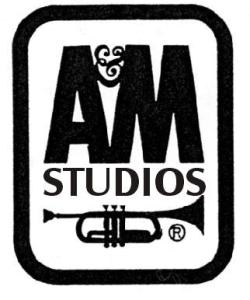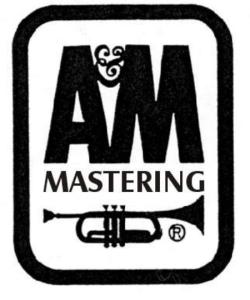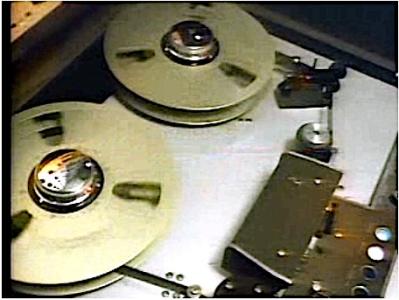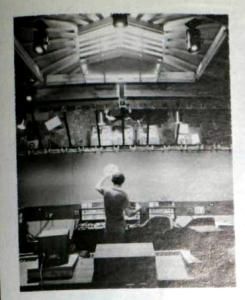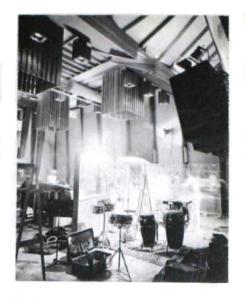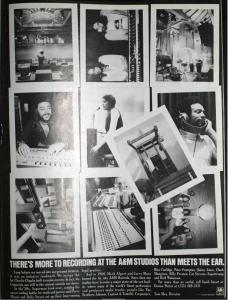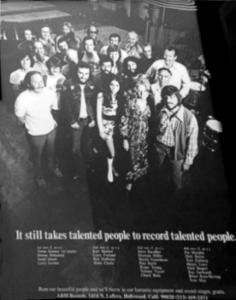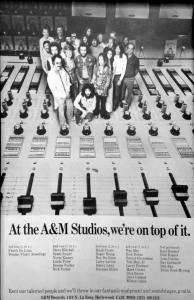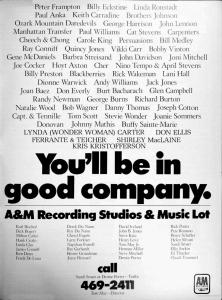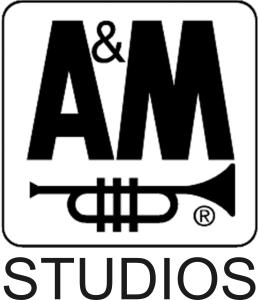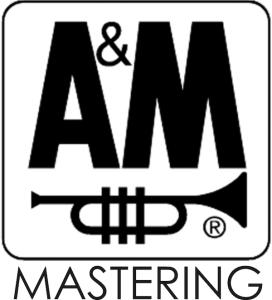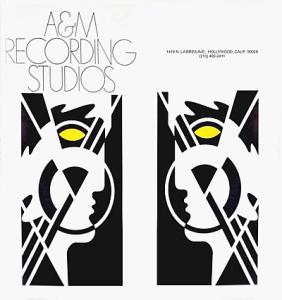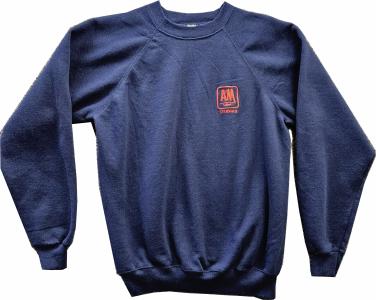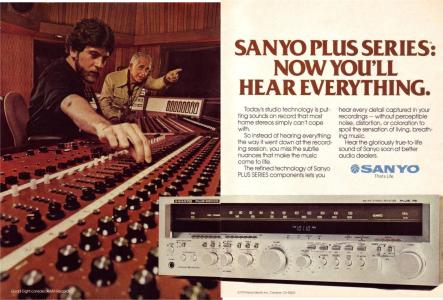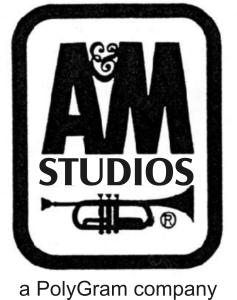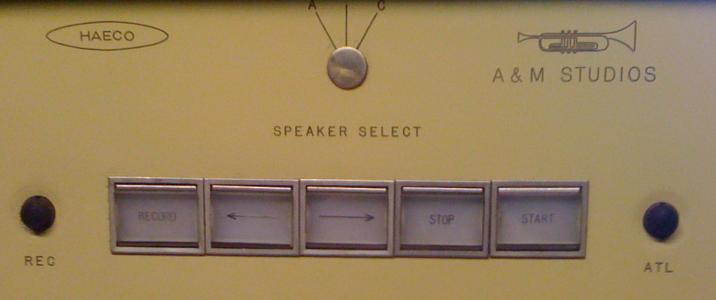
A&M RECORDS STUDIOS HISTORY

A&M STUDIOS: 1960S
Herb Alpert hired Larry Levine as the first engineer in 1967. Levine began working at A&M on January 9, 1967. Before joining A&M, Larry Levine was an engineer at Gold Star Studios, Alpert's preferred place to record. Alpert based the construction of A&M's Studio B on the Gold Star studio. While at Gold Star, Levine engineered sessions for A&M artists including the Tijuana Brass, Chris Montez, Brasil '66 and Ike and Tina Turner.
In April 1967 A&M Records began construction on its studios at its headquarters at the former Charlie Chaplin Studios at 1416 N. LaBrea Avenue in Hollywood, CA. There were two soundstages on the property. A&M kept the newer soundstage and turned the older one into its studio complex. Levine built the original studios electronics while Dave Alpert managed construction of the studios. He started by hiring Howard Holzer to design, build and install the custom recording and mixing consoles. In addition to the Holzer consoles, Scully tape machines and disc cutting system. At some point A&M developed a suspension unit for the Scully mastering lathe that would float a Westrex cutter head.
By mid-October 1967, two of A&M's studios were in operation. Original plans called for only two studios (Studios A and B) but the artist roster grew enough that a third studio (Studio C) and a cutting room were added and opened in February 1968. Even the first versions of these studios were, according to Larry Levine, "developed to provide a creatively conducive atmosphere" with drapes, incandescent lighting, and specially selected chairs instead of the typical fluorescent lights and folding chairs. A&M also included moving ceilings to create different sonic moods.
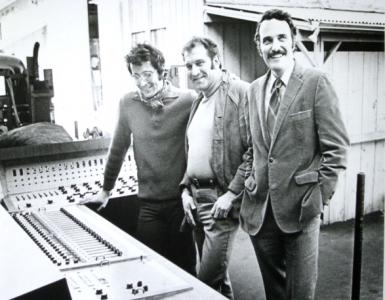
Herb Alpert, Howard Holzer and Jerry Moss
The Holzer HAECO-CSG sound system was built for A&M Records. HAECO was the acronym for Holzer Audio Engineering Company. CSG was Compatible Stereo Generator that collapsed stereo sound for monaural record players. Billboard reported that "the unit allows sound information to pass through from the right and left channels, but places a hold on the center channel information whose amplitude is doubled when it is combined into a single monaural source for radio broadcasting." Billboard also reported in January 1968 that A&M's first monaural single to use the system was by Lee Michaels and Claudine Longet would be first stereo use, however the singles by these artists released around that time were not marked as HAECO-CSG. The first records from A&M marked as HAECO were released starting in September 1968.
Complete list of HAECO-CSG albums on A&M Records
HAECO-CSG Instructions
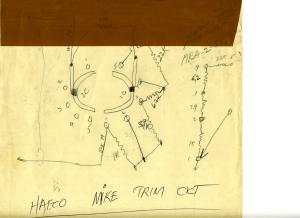
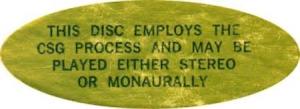
Larry Levine hired three engineers in 1967. They were Dick Bogert, Ray Gerhardt and Henry Lewy--all among the best in the field. Levine set the culture for the studios that remained until they were sold in 2000: the studios were considered time-sensitive; to be maintained at a world-class level for artists and producers; to be a place where innovation in sound was always welcomed, and the men and women who worked there would work as a team so that if an engineer had to leave a session, someone else could step into the job with the same level of professionalism and knowledge. Notably, egos were not welcome. Herb Alpert would echo that sentiment in the early 1980s and Quincy Jones would post the famous, "Leave your ego at the door" for the "We Are the World" session.
A&M Studios added three mixing and two more cutting rooms and reverberation chambers in 1969. The studios had 8 track recording capability. The consoles were all built by Holzer using the HAECO system.
The first A&M album with recording credit at A&M Studios was The Fool on the Hill by Sergio Mendes and Brasil '66.
Alpert and Moss nurtured the studios and the engineers. Not only were fine acoustics a priority, only top recording engineers, mastering engineers and technical engineers graced the studios. The technicians built and refurbished equipment. In 1968, Levine hired Bernie Grundman as the chief mastering engineer. Grundman stayed at A&M until 1984 when he opened his own mastering studio. A&M album covers tell the evolution of recording at A&M from four-track to eight-track to 16-track to 32 then 48-track to digital mastering.
A&M STUDIOS: 1970S
A&M told Billboard in 1970 that it had invested over $1M in three 16-track studios, two mastering rooms and three mixdown rooms.
In 1972 Tom "Beno" May joined the A&M Studios as chief engineer, taking over from Larry Levine.
Around 1974, the studios were upgraded from 16-track to 24-track recording capability and Studio D was built with a Quad 8 console.
In 1975, the console in Studio B was replaced with an APi 3224 and in Studio A was also upgraded to an API in January 1976. The APIs added more flexibility and control to recording. The Studio B API was later moved to Herb Alpert's private studio and in 1994 was moved to his studio at the Herb Alpert Foundation.
Following are photos from an A&M Studios ad in Billboard from late in 1977.
Around 1978 the API console in Studio A was replaced with a Trident Console. The API was moved into Studio C.
In 1979, A&M Studios added digital recording.
A&M STUDIOS: 1980S
Around 1980 Beno May retired.
In 1981 the Studio D Quad 8 console was replaced.
In 1985, the A&M Studios were the site of two charity recordings. On January 28, 45 artists came together in Studio A to record the single "We Are the World" as USA for Africa. The recording benefitted African famine victims. On May 29, 1985, 40 heavy metal artists gathered as Hear 'N Aid to record the single "Stars." Like "We Are the World," an album followed and its proceeds went to USA for Africa to continue famine relief. A&M also donated studio time and more to the "A Very Special Christmas" albums that supported Special Olympics. Jimmy Iovine was working at A&M when he came up with the idea. A&M produced the first five albums in the series (1987, 1992, 1997, 1999 and 2001 and the seventh in 2009) although the A&M Studios were involved in the first four. A&M also financed the original album with $250,000 thanks to Jerry Moss. By 2014, the original album had sold over 4.5 million copies.
Also in 1985, Herb Alpert and Jerry Moss hired Shelly Yakus as A&M Records' chief engineer and VP of A&M Recording and Mastering Studios. One of his first responsibilities was to rebuild the studios. In 1995, at the end of his contract, Yakus told Billboard, "I really miss being in the control room. It's a chance to be creative in a different way, and it's most natural for me."
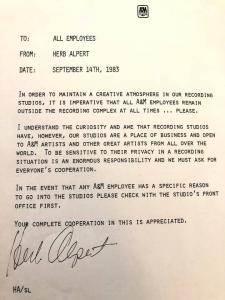
In 1985 a major renovation of the studios began by replacing the consoles and reducing the number of rooms in the studio. The staff doubled in size, including new hire Jimmy Iovine.
A&M STUDIOS: 1990S
Around 1993 Euphonics was hired to build new consoles and one was installed in Studio C. Studio C's primary use was for A&R demos for A&M Records artists with less use by outside clients.
Ron Rutledge began working at A&M Studios on October 10, 1994. Rutledge continued working at the studios after the merger with Universal and the sale of the studios to The Henson Company.
By 1997, A&M Studios had a staff of 40 people supporting five studios with eight live chambers, a remix/mixdown suite and the Chaplin/A&M Soundstage. From the day it opened until it was closed by Universal Music Group in 1999, the term most often associated with A&M Studios was "world class."
Three examples of the equipment hint at the dedication to creating and maintaining a top recording facility. First is the Neve 4872 Console in Studio A. This was the last board built by Rupert Neve in 1978. It was originally owned by George Martin and AIR Studios and was installed at the Montseurrat facility. Alpert and Moss bought the Neve in 1986 and continued to enhance it until they sold A&M Records. The second is the classic microphone collection. There was a perfect choice to enhance the sound of any artist. Finally, A&M owned an extensive catalog of outboard equipment. Full lists of the mics and outboard gear appear on each studio's page and the Equipment page.
The engineering staff was a Who's Who of the best people in the field. Larry Levine, Henry Lewy, Ray Gerhardt and Dick Bogert came to the studios in 1967. Larry Marks and Bernie Grundman started with A&M in 1968. Levine as an engineer, Marks as a producer and Grundman founded A&M's Mastering Division and managed it until 1982 when he opened his own studio. Henry Lewy became a producer with A&M in 1970. Karl Bischof arrived in 1971 to design, redesign and maintain the equipment. Also in 1971, Tom (Beno) May, became the head of the Studios. All told, he would have more than 20 years experience in mastering. The second chief engineer was Tom May, Sr. His son, Tom "Beno" May also came to A&M and was known in his own right. Roger Young, Don Hahn, Roy DuNann, Tommy Vicari, Bruce Botnick, Bruce Swedian, Stewart Whitmore and Ron Rutledge who continued to manage the studios after the lot was sold to the Jim Henson Co....just a few of the many talented A&M Engineering Staff.
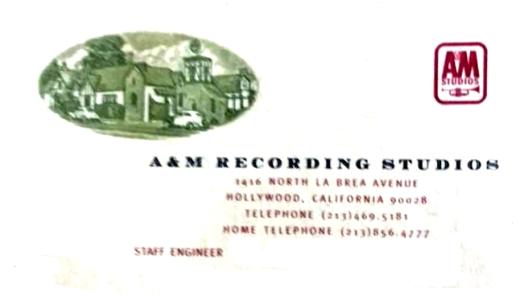
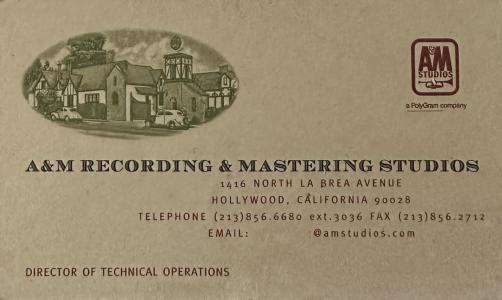
SOURCES:
Equipment lists appeared on A&M Records web site in 1996 and in A West Coast Phenomenon the Studio That Charlie Built: Former A&M Studios, Hollywood: A state-of-the-art facility with a colorful past, and an emphasis on vintage technology by Mel Lambert, November 1997.
A&M Is Creating Studios in Tune with Creative Artists. Billboard, November 11, 1967.
2 Studios of A&M Roll--3d Put in Gear. Billboard, December 21, 1968.
A&M Completing Four Studios. Record World, September 14, 1968.
Former A&M Studios website. Stephen Barncard. October 25, 1996.
A&M Recording Studios by Stephen Barncard.
Photo of Herb Alpert, Howard Holzer and Jerry Moss courtesy of Susie Singer Carter.
Photo of Larry Levine in Studio A by A&M Records.
How Jimmy Iovine Made It 'A Very Special Christmas' in 1985. Frank DiGiacomo. Billboard, November 28, 2014.

